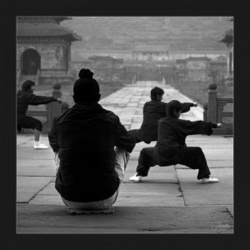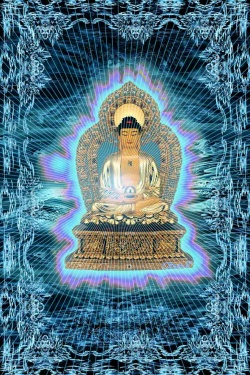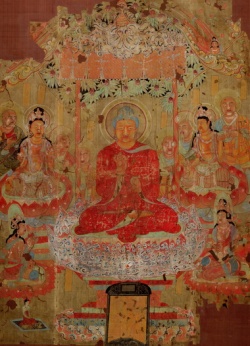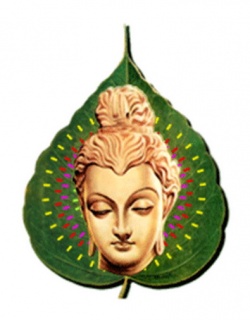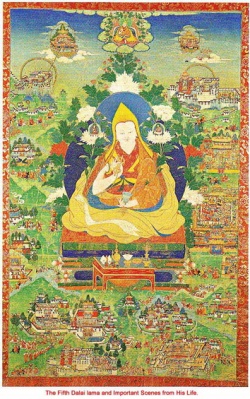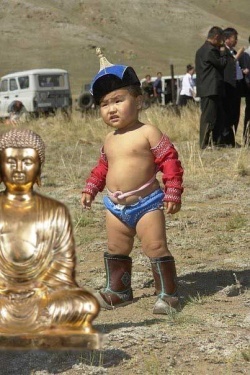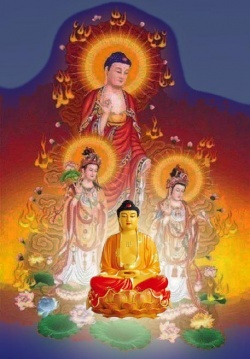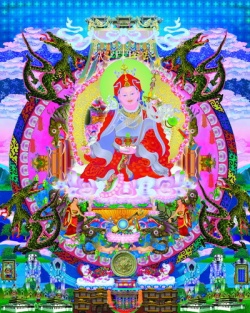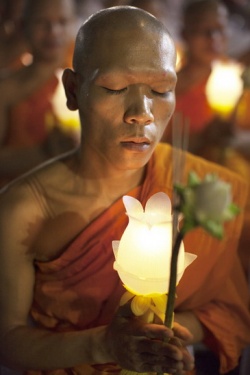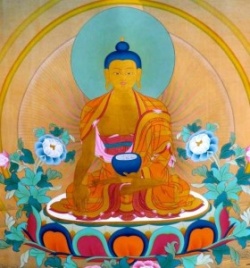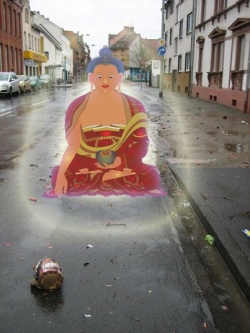Four assemblies
The Four Assemblies And Theravada Buddhism
Prof. Bhikkhu Analayo
Introduction
In this paper I examine two significant developments in the Theravada tradition from the viewpoint of the Pali canonical teaching that the four assemblies- bhikkhus, · bhikkhunis, male lay disciples, and female lay disciples- are the necessary foundation for the Buddha's teaching to thrive. ThesP two developments are the revival of lay meditation and the revival of vhikkhuni ordination.
The Four Assemblies
According to the Mahaparinibbiina-sutta of the Digha-nikiiya, the Buddha proclaimed that he would not pass away until he had established members of each of the four assemblies in being "wise, well-trained, and self-confident", vyattii vinztii visiiradii (DN 11 104). 1
This passage makes it unmistakably clear that an essential foundation for the Buddha's mission of teaching the Dharma was that bhikkhus as well as bhikkhunzs, and male as well as female lay disciples, are wise and well-trained, and that they are also selfconfident.
The four assemblies come up again in the Piisadika-sutta of the same Digha-nikiiya, which sets the Buddha's possession of four assemblies of such wise and self-confident disciples in contrast to other teaching traditions under the leadership of someone who is not a fully awakened Buddha (DN Ill 125). In other words, having these four assemblies of wise and self-confident disciples is what distinguishes a Buddhist tradition from a tradition that is not Buddhist.
According to the Lakkha1Ja-sutta, also founq in the Digha-nikaya, the wheel-marks on the soles of the Buddha's feet foretold hjs destiny of being srr01.;mded by these four assemblies. (DN III 148). This makes possession of four assemblies an integral, in fact indispensable, aspect of the Buddha's ministry. A discourse in the AJJguttaranikaya highlights the rather unfortunate condition of being reborn in a "border country", which is a country where the four assemblies of Buddhist disciples cannot be found (AN IV 226).
The Mahiivacchagotta-sutta of the Majjhima-nikiiya reports that, on hearing that each of these four assemblies of Buddhist disciples had reached various levels of awakening, the lt wanderer Vacchagotta decided to join the ranks of the Buddhist monastic order (MN I 491).
This stands in contrast to numerous other occasions when he approached the Buddha or his disciples with various . questions, without the resulting discussion inspiring him sufficiently to want to go forth as a Buddhist monk2.
The message that emerges on comparing these passages to the Mahiivacchagotta-sutta is that even detailed replies to his questions could not achieve what was eventually accomplished through the inspiring example set by the accomplishments attained by each of the four assemblies.
Prof. Analayo, Professor, Department of Buddhist Studies, University of Hamburg, Hamburg, Germany.
In sum, there can be little doubt that the Pali discourses consider the four assemblies to be of fundamental importance for the thriving of the Buddha's dispensation, the siisana. Their coming into being is seen as an integral aspect of the Buddha's mission and forms a distinctive mark of the Buddhist tradition.
This in turn implies that any living Buddhist tradition that orients itself on the values enshrined in the Pali canon needs to ensure that these four assemblies are in existence, and that each of these assemblies has the opportunity to develop wisdom, to train themselves well, and in this way to become self-confident.
Central for the development of wisdom and a way of training oneself in such a way as to become self-confident would of course be the practice of meditation.
The canonical sources in fact repeatedly refer to accomplished meditators not only among bhikkhus, but also among bhikkhunls as well as Jay disciples.
The Etadaggavagga of the Anguttara-nikiiya presents various named bhikkhunis as foremost in meditation, as well as in the attainments that result from meditation, such as the quick gaining of direct knowledge, the divine eye, recollection of past lives, and supernormal powers (AN I 25).
Needless to say, the fact that, for example, bhikkhuni Uppalavm:z Jii is foremost in supernormal powers implies that other bhikkhunis also had such abilities, albeit not to the high degree to which these had been mastered by UppalavaJIJii.
There can be little doubt that the ancient bhikkhunfs were reckoned to have been highly accomplished meditators.
The same Etadagga-vagga of the Anguttara-nikiiya also presents the female lay disciples Uttarii and Sii.miivatf as foremost in meditation or in the practice of loving kindness, metta (AN I 26).
An example for a male lay disciple accomplished in meditation is Pessa in the Kandaraka-sutta I who in front of the Buddha describes his practice of the four establishments of mindfulness, satipafthiina (MN I 340). Other lay practitioners proficient in satipatfhiina are Siriva;i;iha and Manad!nna, mentioned in the Sarttyutta-nikiiya (SN V · .177f).
The householder Citta even confutes the leader of the Jains by proclaiming his expertise in attaining the four absorptions, jhana (SN IV 298). This discourse shows him to have indeed become wise and self-confident, to the extent of successfully confronting the leader of the Jains in a debate situation.
Lay Meditation
In later Theraviida tradition, the involvement of lay disciples in mindfulness practice or the cultivation of absorption appears to have gradually diminished in favour of a stronger emphasis on ritual activities and the practice of supporting the monastic community through offerings and services.
The revival of large scale lay meditation practice during the twentieth century, in particular the cultivation of insight, vipassanii, appears to have been in considerable part inspired by the activities of the Ledi Sayiidaw in Myanmar.3
In particular the approach to the cultivation of vipassanii taught by the Mahiisi Sayiidaw has spread far and wide, becoming a formative influence in the revival of lay meditation in the Theraviida tradition.
The vipassana teachings by the Mahiisi Sayadaw did not meet with undivided approval from the outset.
Some traditional bhikkhus in Sri Lanka were concerned that the method he taught did not conform to the canonical scriptures.
For them this raised doubts about the potential of this style of meditation to lead to genuine forms of realization.4
In spite of such criticism, however, the insight meditation as taught by the Mahasi Sayadaw continued to spread throughout Asia, including Sri Lanka itsc!f, and eventually also reached the West.
In the United States the Insight Meditation Society in Massachusetts, originally founded in 1975 by Sharon Salzberg, Joseph Goldstein, and Jack Komfield, has bten continually offering courses and instructions in the cultivation of liberating insight and has become a central force in the spread of vipassanii meditation in the West.
Among the many thousands of practitioners who have attended a retreat at the Insight Meditation Society in Massachusetts was Jon Kabat-Zinn.
Experiencing for himself the benefits of mindfulness practice led him to the intuition to promote its use in a hospital setting.
Starting at the Stress Reduction Clinic at the University of Massachusetts Medical School, this intuition became the starting point for the well-known Mindfulness Based Stress Reduction.5
By now, interest in and practice of mindfulness has spread from its clinical use to a range of other areas in secular society and is slowly about to become an integral part of daily life for many US citizens.6
In this way the revival of lay meditation, in spite of initial resistance by traditional bhikkhus, has been successful and resulted in a range of beneficial effects.
Although not all of the modem applications of mindfulness conform to the set of values that inform traditional Buddhist practice, there can be no doubt about the overall positive repercu.ssions of this development.
Equipped with the possibility to cultivate meditative insight,. lay disciples of the Theravada tradition are nowadays able to cultivate wisdom and self-confidence in a manner that would not have been possible in the past, when they had little or even no access to meditation instructions.
The Loss of bhikkhuni Ordination In addition to the loss of regular lay meditation practice, in the course of history the Theravada tradition also lost its bhikkhuni ordination lineage.
Introduced during the reign of king Asoka to Sri Lanka by Sanghamitta and a group of bhikkhunis from India, at some point in the early eleventh century the bhikkhuni order appears to have come to an end.
This seems to have happened during a time of warfare and inner turmoil that had forced many of the bhikkhus to leave the country.
According to our present state of knowledge, at that time the order of bhikkhunis in India had already become extinct and no living bhikkhunz tradition appears to have been in existence in other Theravada countries7•
Before its eventual demise, in the early fifth century the bhikkhuni ordination lineage had been transmitted from Sri Lanka to China (T L 939c). In the eighth century, however, the Chinese emperor apparently imposed the use of the Dharmaguptaka IllS Vinaya on all monastics in his realm (T L 793c) .
The Dharmaguptaka Vinaya is the legal code of one of the different Buddhist traditions that developed after the Buddha's demise, similar in this respect to the Theravada tradition and its legal code, the Pali Vinaya.
The respective Vinaya texts, in spite of considerable similarities, show several differences.
For one, the overall number of rules for ]]bhikkhunis]] differs.8 In addition, the ritual procedure as well as the markers required to establish the boundary for the location to be used for ordination also differ.9
From a strictly legal point, even though the ordination lineage received by the Chinese in the fifth century was Theravada, since about the eighth cenh1ry it has become a different lineage, basing its legal procedures on a different legal code.
The Eight or Ten Precept Nuns Lacking an order of bhikkhunis, the wish of women in Theravada countries to live a celibate life under the guidance of the teachings of the Buddha has found its expression in the form of taking eight or ten precepts.
The tradition with the longest history in this respect appears to be the mae chis in Thailand: who shave off their hair and wear white, a colour that in traditional Theravada countries is worn by laity on religious observance days and never worn by bhikkhus.10
The dress in a way signals the ambiguous position of mae chis in between laity and monastics, evident also in other respects.
The ordination of mae chis is considered a secular event and they continue to use their lay name after ordination.
Unlike bhikkhus, mae chis do not receive free medical treatment or free travel on public transport, but are expected to pay for such services themselves. 11 In contrast bhikkhus should according to the Vinaya regulations not possess or handle money.12
Comparable nun traditions in Myanmar are the thila shins and in Sri Lanka the dasasil miitas.n
In spite of some local differences, these share. with the mae chis the basic problem of being situated in an ambivalent position between laity and monastics. There can be little doubt that lack of recognition of their monastic status continues to be a problem.
This in turn makes it rather difficult for them to live up to the expectation voiced in the Mahtiparinibbiina-sutta as cited earlier.
The Revival of bhikkhuni Ordination Attempts to revive the bhikkhunz ordination lineage have a long history, with two relatively recent attempts taking place in 1988 at Los Angeles and 1996 at Sarnath.
These attempts involved receiving ordination from Chinese bhikshu1Ji5 or Korean bhikshus and therefore in the Vinaya lineage of the Dharmaguptaka tradition.
An emblematic expression of the problem of gaining general recognition in the case of both these ordinations is the circumstance that the candidates were asked to put on Dharmaguptaka-style robes, which are usually grey-coloured and involve the wearing of a sort of trousers.
Whereas it is natural for Chinese and Korean bhikshus and bhikshus is to expect candidates for higher ordination to wear such robes, in the eyes of traditional Theravadins this is easily perceived as an act of conversion to the Mahayana.
In fact participants of the 1988 and 1996 ordinations have at times been maligned for "putting on trousers", something that in the Theravada tradition is seen as incompatible with monastic status.
Another problem is the administration of the bodhisattva precepts that usually forms the last step in a higher ordination given by Dharmaguptaka monastics.
Even though the bodhisatta path is recognized in Theravada Buddhism as a viable option, those ordained in 1988 and 1996 have been considered as having now become adherents of the Mahayana, instead of being recognized as Theravada bhikkhunis.
These negative repercussions would have informed preparations for another ordination held in 1998 in Bodhgaya with the collaboration of Chinese bhiktjUJ:!IS, at which the candidates were allowed to dress in traditional Theravada robes and the ordination ceremony was done in cooperation with Theravada bhikkhus.
The Theravada candidates also made a point of not participating in the taking of bodhisattoa precepts, but only took part in the procedures that were strictly concerned with ordination. 14
In addition, the Sri Lankan participants in the Bodhgaya ordination subsequently received another ordination administered only by Theravada bhikkhus.
This is of considerable importance for the claim to legal validity of the 1998 ordinations.
Theravada Legal Requirements
Evaluating how the ordination conferred in 1998 could satisfy legal requirements according to Theravada standards requires a brief excursion into the evolution of bhikkhuni ordination reported in the Cullavagga of the Pali Vinaya.
This evolution begins with the Buddha conferring ordination on Mahapajapati Gotami through acceptance of eight "principles to be respected", garudhamma (Vin II 255).
The sixth of these eight principles stipulates that the ordination of a female candidate is to be given by both orders, that is, by bhikkhus and bhikkhunis.
Next Mahapajapati Gotuni asked how to proceed in relation to her followers, who also wished to be ordained. At this pomt in the history provided in the Pall Vinaya, only Mahapajapati Gotami had become a bhikkhunl.
This made it impossible for her to form an order of bhikkhunis that could collaborate with an order of bhikkhus, as sfipulated in the sixth garudhamma.
In reply to her query on how to proceed in this situation, the Buddha is on record for authorizing the giving of ordination to female candidates by bhikkhus on their own, that is, without the collaboration of an order of bhikkhunis (Vin II 257).
The Vinaya continues with two more regulations that were promulgated after an order of bhikkhunis had come into existence. The first regulation originates in relation to a set of questions of a somewhat personal and intimate nature that a candidate is to be asked in order to ascertain if she is eligible for ordination. In order to avoid embarrassment when having to reply to such questions in the presence of bhikkhus, according to this regulation the female candidate should be asked such questions by bhikkhunis only (Vin II 271).
After having gone through the questioning and other aspects of the ordination ceremony by an order of bhikkhunis, the candidate should then approach an order of bhikkhus to complete the ordination.
Another regulation concerns a situation when the candidate cannot approach an order of bhikkhus to complete the ordination because of some impending danger that makes it risky to travel. In such a situation, a messenger can act on behalf of the candidate and in this way the ordination in front of the order of bhikkhus can be completed (Vin II 277).
When evaluating these four different regulations it needs to be kept in mind that, according to a basic legal principle, the last rule on a particular issue is the one that is valid and which needs to be taken into account. It is not possible for different rules on the same issue to be in existence simultaneously, as one would be at a loss as to which rule to follow. A simple illustrat;on is the setting of a speed limit for a particular road. Even if at a time in the past a faster speed limit was in existence, when driving on this road now one needs to take into account the current speed limit. If one is stopped by the police for speeding, it is not possible to get away by arguing that one had decided to follow the previous speed limit. This has been rendered invalid by the current one, which is the one to be observed. This basic legal principle has been applied to the history of bhikkhuni ordination in the Pali Vinaya, leading to the conclusion that, since the Buddha's authorization of giving ordination to female candidates by bhikkhus only has been followed by subsequent regulations, it is no longer valid. On this interpretation, once an order of bhikkhunis has become extinct, the bhikkhus on their own are unable to revive it.
15 This conclusion overlooks the fact that the authorization for bhikkhus to give ordination on their own was given in a different situation, compared to the later regulations. According to its narrative context, the authorization was given precisely in order to enable bhikkhunf ordination in a situation where an order of bhikkhuni.s is not in existence. In contrast, the subsequent rules are meant to deal with a situation where an order 0 bhikkhunis is in existence. In such a· setting, the order of bhikkhunis should first perform their part, including the posing of the various questions regarding the suitability of the candidate, and afterwards the order of bhikkhus will perform their part. If it is not possible for the candidate to approach the order of bhikkhus, a messenger can act on behalf of the candidate. These two rules refer to a situation in which an order of bhikkhunis is in existence and is able to take its part in an ordination procedure. The authorization for bhikkhus to ordain on their own, in contrast, refers to a situation where an order of bhikkhunis is not in existence.
These two basically different situations could be compared to speed limits set up for different roads. It does not matter if the speed limit for another road has been set up more recently than the speed limit for the road on which one intends to drive. However recent it may be, it still refers to a different road. For the road on which one intends to drive, only the speed limit set up for this road is relevant. In the same way, close inspection of the Pali Vinaya shows that it does allow for a revival of bhikkhuni ordination by bhikkhus alone, as the permission given by the Buddha has not been rendered invalid by other regulations that regulate a fundamentally different situ ation.16
Successful Revival
The Bodhgaya ordination held in 1998 has met with considerably more success than its predecessors. In addition to the careful design of the ordination procedure in order to make it appear as Theravada as possible, its legal appeal rests on the combination of two ordination procedures. One is the ordination conferred by the Chinese bhiku1J.IS. For those who see it as valid to reconnect in this way to what after all is an ordination lineage that sterns from Sri Lanka, the first ordination can be co nsidered acceptable. The subsequent ordination given by Theravada bhikkhus on their own then assumes the character of a procedure known in the Theravada tradition as dafhikamma, "making strong".
This is a formal act through which monastics ordained elsewhere can be granted recognition by the monastic community of which they wish to be part.17
If ordination given by Dharrnaguptaka bhikurzzs is considered invalid, however, then the situation becomes similar to that described in the Pali Vinaya, namely The significance of the revival of lay meditation in the twentieth century has its counterpart in the revival of bhikkhunz ordination that is becoming a prominent feature of the early twenty-first century. Both result in improving the full participation of all four assemblies in modem Theravada Buddhism. Both also share the circumstance no bhikkhuni order capable of conferring ordination is in existence. For exactly this situation the Buddha is on record for having given the authorization that bhikkhus can confer ordination on their own. From this perspective, then, the first ordination conferred by the Chinese bhiku1J.iS will be of no legal consequence, but the second ordination given by Theravada bhikkhus ensures that the candidates nevertheless did receive a legally valid ordination according to Theravada standards.
·
The solution reached through the combination of two ordinations adopted in 1998, as well as the fact that the candidates at the Bodhgaya ordination were allowed to wear Theravada robes, etc., seem to be chief factors for the present success of the revival of the bhikkhunf order. This has by now been well established in Sri Lanka and, in spite of continued resistance by some bhikkhus, has met with much appreciation from the laity. 18 The lineage created by the Bodhgaya ordinations has also been successfully transmitted to Thailand, where the number of bhikkhunzs is steadily increasing. Whereas Myanrnar spearheaded the revival of lay meditation in the twentieth century, in the revival of bhikkhunz ordination Sri Lanka has taken the lead, followed by Thailand.
Conclusion
that they initially met with considerable opposition from some bhikkhus, who were under the impression that these revivals do not conform to the canonical scriptures. Such opposition has been particularly strong in the case of the revival of bhikkhunZ: ordination, where legal concerns naturally have a much greater impact than in the case of meditation practice. Nevertheless, in both cases such opposition keeps diminishing, allowing each process its natural unfolding. In this way, these two remarkable developments promise to result in the full resurrection in the Theravada tradition of the four assemblies that according to Notes and References
1. References to Pali sources here and elsewhere are to the PTS edition, references to Chinese sources are to the Taisho edition. I am indebted to Adam Clarke and Mike Running for commenting on a draft version of this paper.
2. Cf. MN I 481, MN I 483, SN IV 391, SN IV 395, SN IV 398, SN IV 400, AN I 160, as well as the Vacchagotta-saTfzyutta, SN ill 257ff. 3. For a detailed study see Braun,. Erik, T11e Birth of Insight, Meditation, Modem Buddhism & The Bum Mtmk Ledi Sayadaw, Chicago: University of Chicago Press, 2013.
4. A survey of the main arguments has been provided by Bond, G.D. The Buddhist Revival in Sri Lanka, Religious Tradition, Reinterpretation and Response, Columbia: University of South Carolina Press, 1988 pp. 162-171; the actual exchange has been documented in I<heminda and Nfu;luttara Satipaffhana Vzpassanii Meditation: Criticism and Replies, Malaysia: Sela'ngor: Buddhist Vipassana Meditation Society, 1990. (originally published 1979).
5. The beginnings of the programme are described by Kabat-Zinn, ]on. "An Outpatient Program in Behavioral Medicine for Chronic Pain Patients Based on the Practice of Mindfulness Meditation: Theoretical Considerations and Preliminary Results", General Hospital Psychiatry, 1982. 4: pp.33-47. For a monograph study see Kabat-Zinn, Jon. Full Catastrophe Living: Using the Wisdom of your Body an.d Mind to Face Stress, Pain, and Illness, Delta Trade Paperbacks, 1991.
the Pali canon form the foundation for the Buddha's teaching. This will hopefully enable each of these four assemblies, be they bhikkhus or bhikkhun'fs, male or female lay disciples, to become "wise, well-trained, and self-confident and thereby to live up to the expectation held according to the Mahiiparinibbana-sutf:a by the Buddha himself.
6. A detailed study of the spread of mindfulness in the USA has rectlntly been published by Wilson, Jeff. Mindful America, The Mutual Transformation of Buddhist Meditation and American Culture. Oxford: Oxford University Press, 2014.
7. See Skilling, Peter. "A Note on the History of the Bhikkhuni-scu:tgha (II): The Order of Nuns after the Parinirvfu)a". The World Fellowship of Buddhists Review, 1993, 30. pp.4 & 3l.l:pp. 29-49.
8. .For a comparative survey of the different codes of rules for bhikkhunfs see Kabilsingh, Chatsumam. A Comparative Study of Bhikkhuni PtiJ:!inwkkha. Delhi: Chaukhambha Orientalia, 1984.
9. See Chung, Jin-il. and Kieffer-Piilz, Petra. "The karmavacanas for the Determination of s'ima and ticivarex;ta avippaviisa", in Dharmaduta, Melanges offerts au venerable Thich Huyen- Vi a /'occasion de son soixante-dixieme anniversaire, bhikkhu, T. Dhammaratana and bhikkhu, Pasadika (ed.). Paris: Edition You-Feng, 1977, pp.155.
10. The same holds for the nun traditions in Cambodia and Laos.
11. See, e.g., Falk, Monica Lindberg. Making Fields of Merit, Buddhist Female Ascetics and Gendered Orders in Thailand, Copenhagen: NIAS Press, 2007 and for further publications Analayo.
"The Revival of the Bhikkhuni Order and the Decline of the Sasana", Journal of Buddhist Ethics, 2013. 20. pp. 110-193.
The Maha Bodhi 11 20
12. Vin IU 237.
13. On the thila, shin e.g., Kawanami, Hiroko. see, Renunciation and Empowerment of Buddhist Nuns in Myanmar-Burma, Building a Community of Female Faithful, Leiden: Brill, 2013. On the dasasil mata see Salgado, Nirmala S. Buddhist Nuns and Gendered Practice, In Search of the Female Renunciant, New York: Oxford University Press, 2013. For further publications see Analayo 2013 (as in the previous note).
14. For an account of the 1998 ordination see Li, Yuchen. "Ordination, Legitimacy and Sisterhood. The International Full Ordination Ceremony in Bodhgaya", in Innovative Brddlrist Women: Swimming Against the Stream, Tsomo, Karma Lekshe. (ed.), Richmond, Surrey, UK: Curzon, 2000, pp.168-198
15. This position is taken, for example, by bhikkhu, Thanissaro. The Buddhist Monastic Code li, The Khandaka Rules Translated & Explained by Jhanissaro Bhikkhu (Geoffrey DeGra/f), Revised Edition. California: Metta Forest Monastery, 2013. (originally published 2001), p. 449£. A more detailed exposition of this position can be found in Payutto, Phra. The Buddhist Discipline in Relation to Bhikkhunis, Questions and Answers, Moore, R. (tra), 2013. http://www.buddhistteachings. org/the-buddhist-discipline-in-relation-tobhikkhunis, p. 58ff.
16. See in more detail Analayo, bhikkhu. "The Legality of Bhikkhuru Ordination", journal of Buddhist Ethics, 2013. 20: pp. 310-333; Analayo, bhikkhu. "On the Bhikkhuru Ordination Controversy", Sri Limka 'International Journal of Buddhist Studies, 2014. 3: pp. 1-20; and Analayo, bhikkhu .. "The Cullavagga .. on bhikkhuni Ordination" (forthcoming).
17. On this option see Ki.effe.r-Piilz, Petra. "Presuppositions for a Valid Ordination with Respect to the Restoration of the Bhiknunl Ordination in the MUiasarvastivada Tradltio'n", in Dignity & Discipline, The Evolving Role of Women in Buddhism, Mohr, T. and Tsedroen J. (ed.), Boston: Wisdom, 2010. pp. 217-225, see especially note 16. 18. See the report by Mrozik, Susanne. "'We Love Our Nuns': Affective Dimensions of the Sri Lankan Bhikkhuru Revival", Journal of Buddhist Ethics, 2014. 21: pp. 57-95.
2559 B.E. VOL.122, MAY 2015 (25591h Buddha Jayanti Issue) Editor-in-Chief:
Sri Hemendu Bikash Chowdhury Editorial Advisory Board :
Ven. M. Suddhammalankara Thero Ven. P. Seewalee Thero
Prof. Dr. Dipak Kumar Barua Prof. Dr. Bimalendra Kumar
Dr. Saswati Mutsuddy
Editor:
Prof. Dr. Subhas Chandra Saha Maha Bodhi Society of India Sri Dharmarajika Chaitya Vihara Head Office : 4A, Bankim Chatterjee Street, Kolkata 700 073, India

